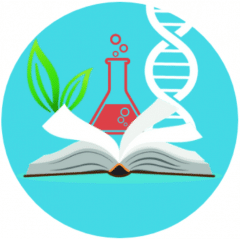
When seeking natural relief from pain, the quality and origin of the ingredients matter just as much as their effectiveness. Sourcing is critical because it directly affects the safety, potency, and ethical impact of pain relief products. Poor sourcing can lead to contamination, reduced effectiveness, or unsustainable harvesting that can harm both your health and the environment.
Selecting carefully sourced natural remedies, such as lab-verified 7-Hydroxymitragynine (7-OH-MG) tablets or premium quality Turmeric extracts, helps ensure that products meet high standards for purity and consistency. Products with transparent sourcing give users more confidence that what they are using is both safe and responsibly created.

Key Takeaways
- Sourcing greatly impacts natural pain relief product quality.
- Trusted suppliers help ensure ingredient safety and effectiveness.
- Consumers benefit from knowing product origins and verification.
The Importance Of Sourcing In Natural Pain Relief Products
Selecting natural pain relief products requires more than reading the label. Sourcing practices directly influence product effectiveness, safety, and ethical impact.
Quality Assurance And Potency
Proper sourcing ensures that herbal ingredients remain potent and consistent. Variations in quality may result from poor harvesting or inadequate supplier standards. Manufacturers that use certified suppliers and adhere to rigorous quality control protocols—such as GMP and third-party testing—produce products with greater reliability.
Lapses in sourcing can compromise safety, sometimes introducing contaminants or adulterants. Consistency in active compounds is fundamental for predictable results. Trusted brands typically emphasize ingredient verification through lab analysis. Certifications such as USDA Organic signal adherence to higher standards. These measures help ensure that each batch meets specified potency levels, avoiding weak or ineffective products.
Ingredient Transparency And Traceability
Ingredient transparency matters for customer trust and informed decisions. Brands that provide full traceability—from farm to finished product—boost consumer confidence and offer assurance about what goes into each remedy.
Detailed sourcing records help manufacturers track origins, cultivation practices, and any treatments applied during processing. This level of traceability enables easier compliance with regulatory standards and makes it possible for products to pass third-party verification.
Transparency is also important for those with specific dietary or allergenic preferences. Knowing exactly what is used, and where it comes from, empowers consumers to choose products that fit their needs.
Ethical Sourcing And Sustainability
Ethical sourcing minimizes environmental harm and supports long-term availability of medicinal plants. Responsible suppliers avoid practices that deplete natural resources or exploit local communities. Certifications like Fair Trade or organic often reflect higher ethical and environmental standards.
Prioritizing sustainability includes supporting biodiversity, conserving wild plant populations, and ensuring fair labor conditions. Companies may use periodic supplier audits to enforce these requirements. Rising consumer awareness makes ethical sourcing a factor in purchase decisions. Manufacturers that commit to sustainable practices help protect ecosystems and local livelihoods.
Evaluating Natural Ingredients And Suppliers For Pain Relief
Selecting natural products for pain relief depends on the consistency, purity, and documented effectiveness of each ingredient. Ingredient sourcing, testing, and trustworthy suppliers play a significant role in the safety and impact of these products.
Selecting High-Quality Medicinal Herbs
Choosing high-quality medicinal herbs is fundamental in herbal medicine. Herbs like ginseng, holy basil, and turmeric are staples in natural remedies for pain relief and chronic pain management. Quality products are often distinguished by their origin, method of cultivation, and the part of the plant used.
Herbalists emphasize herbs that are grown in nutrient-rich soil and harvested at peak potency. Look for transparency from suppliers on their farming practices, such as whether their herbs are organic or free from heavy metals and pesticides. Testing for contaminants and standardized potency is critical to ensure safety and efficacy
Understanding Anti-Inflammatory Properties
Anti-inflammatory properties are central to the health benefits of many herbal remedies for pain. Turmeric, for instance, contains curcumin, a compound known for its ability to reduce inflammation and support chronic pain management. Holy basil offers similar anti-inflammatory support and may also help modulate stress responses.
Laboratory studies and clinical reviews have indicated that herbal medicine with potent anti-inflammatory effects can provide relief when properly sourced and formulated. Selection of herbs should be informed by scientific evidence of their bioactive compounds and effectiveness against inflammation. Relationships between specific minerals and inflammatory pathways should also be considered since mineral content can affect an herb’s stability and action.
The Role Of Reputable And Reliable Suppliers
A reputable supplier is essential for maintaining product quality and ensuring that claims about natural remedies are accurate. Reliable suppliers provide documentation on product sourcing, batch testing, and handling practices.
Trusted distributors often partner with educational organizations or employ certified herbalists, which fosters innovation and adherence to industry standards. Reliable suppliers are transparent about the stability, storage, and processing of their herbs, ensuring the consistency needed for chronic pain management.
Conclusion
Sourcing plays a critical role in the safety and effectiveness of natural pain relief products. Ethical and sustainable sourcing practices help protect the environment and support the long-term supply of quality ingredients. Consumers and manufacturers benefit when herbal ingredients are obtained responsibly, as this reduces the risk of contamination and ensures product consistency. Choosing products that emphasize sustainability can make a significant difference in both health outcomes and environmental impact.
For those seeking natural options, understanding the importance of sourcing can help guide better decisions and promote more reliable pain relief. Responsible sourcing aligns with broader efforts to promote safety and trust in natural pain management products.
At Biology Junction, our mission is to bridge science education with real-world applications. Whether you’re studying chromatography, molecular biology, or the pharmacological effects of plant-based compounds, we provide trusted, curriculum-aligned resources to support students and educators alike. Our detailed guides and experiments—such as sourcing studies on natural pain relief ingredients—help reinforce key biological concepts while encouraging ethical and scientific thinking. Stay informed with Biology Junction, your go-to source for high-quality biology lesson plans, lab activities, and science-based articles.






